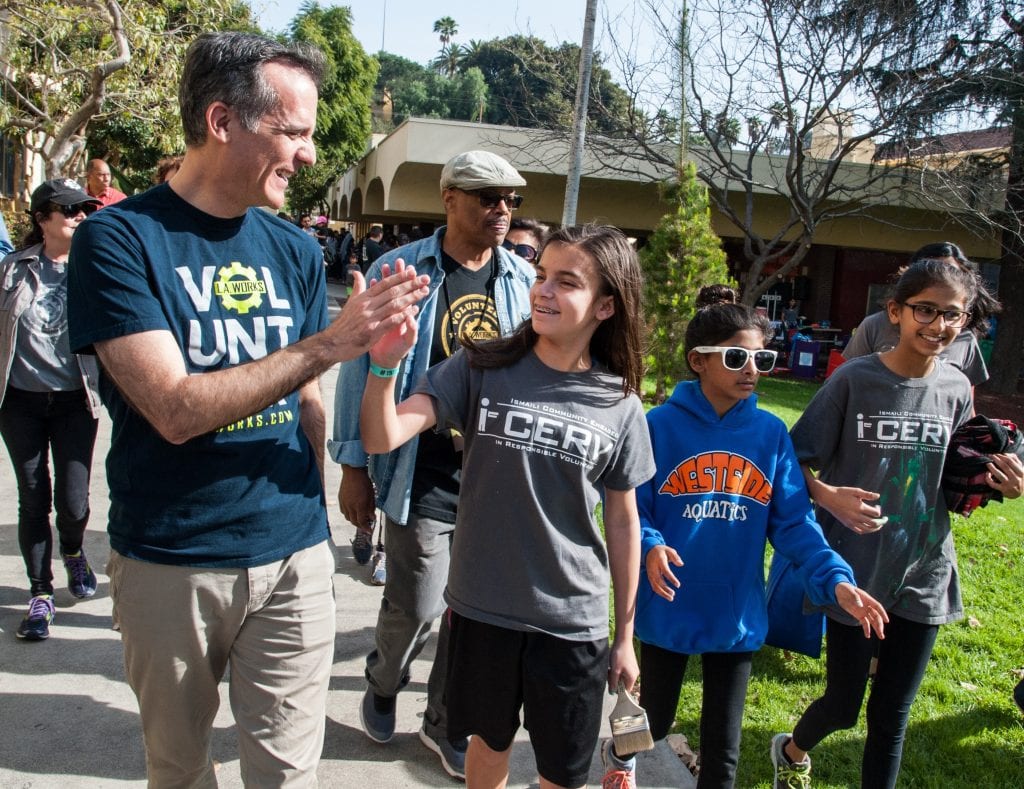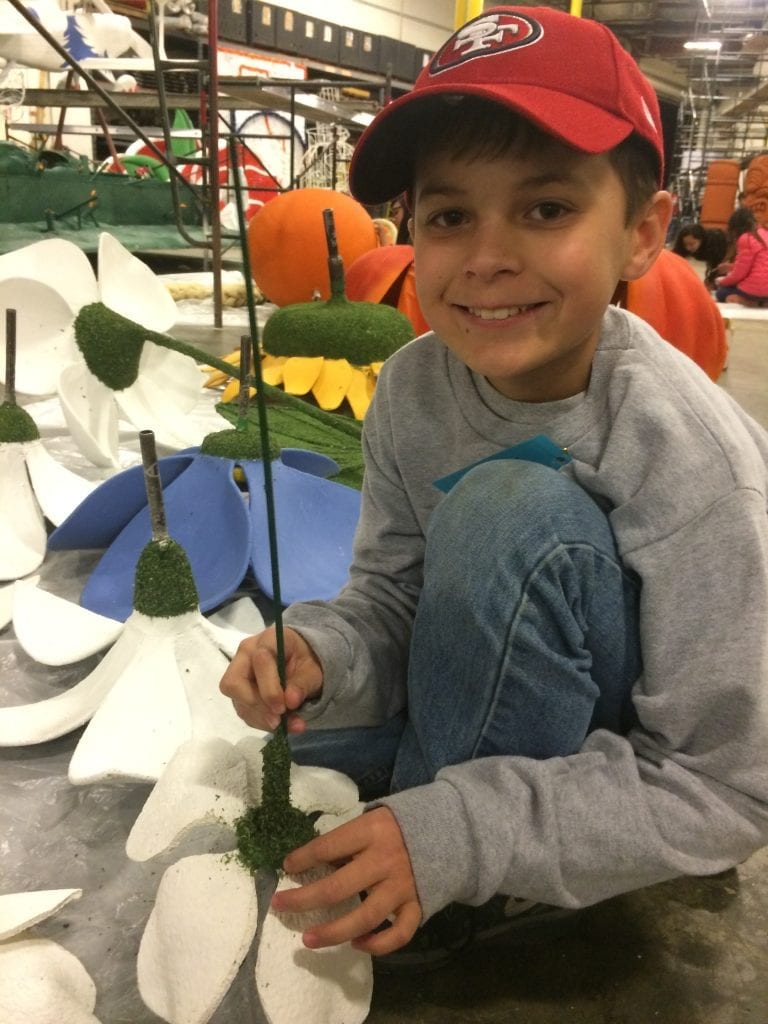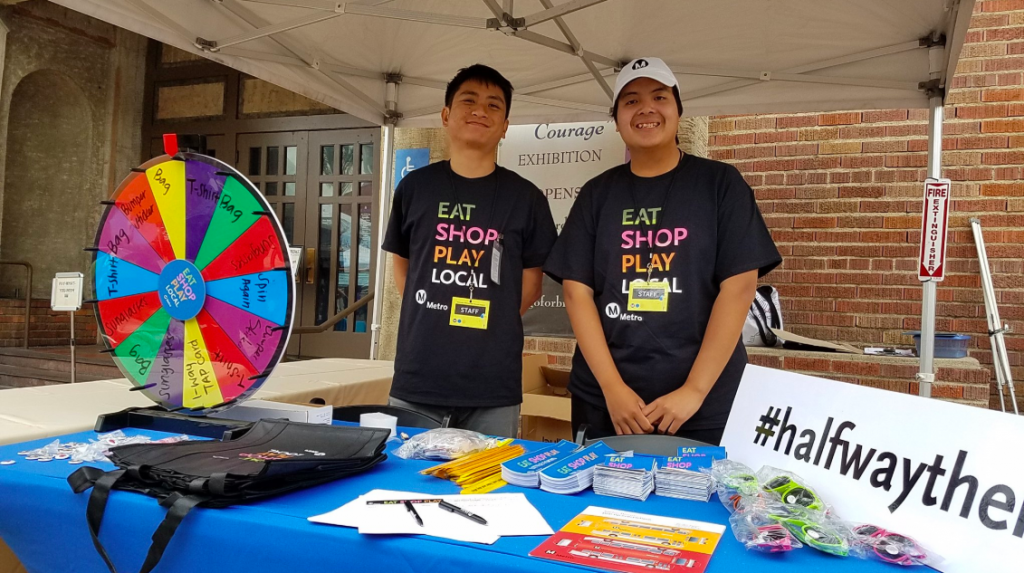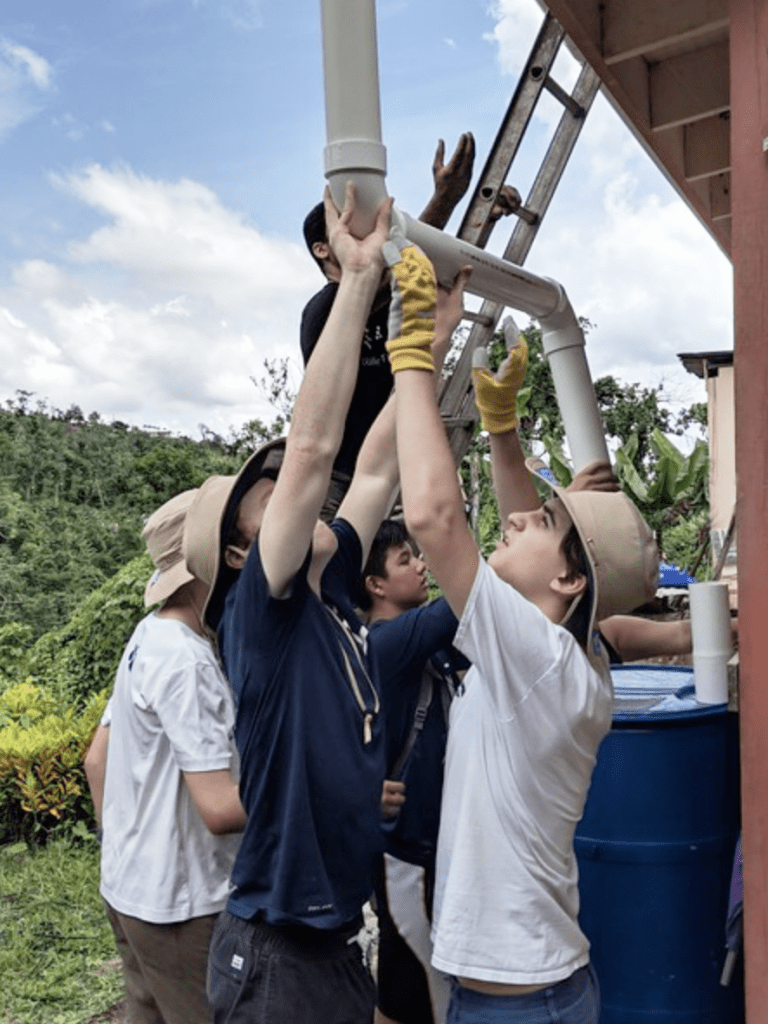
For some students, it’s just another box to check, another requirement to fulfill before graduation. For others, community service is a chance to explore possible careers, discover personal talents and interests and connect to their neighborhoods in a deeper and more profound way.
Participating in community service can change lives – when students decide to use the platform as a sincere learning experience and not just another forgettable benchmark. This is where parents, school counselors, teachers and community service representatives can play a part.
Consider the case of Arisha Kassam, a high school student whose involvement in community service changed not only her life, but an entire town.
Originally from Canada, Arisha had to relocate with her single mom from the Bay Area to the Visalia area, where they had very few family or social connections, says Alif Khalfan of the Los Angeles Chapter of i-CERV, a national faith-based organization that provides community volunteer opportunities. “I advised her that service could be a means to communicate with her new community. So, she started to work for her school to start a program of community service projects,” Khalfan says.
The girl worked with civic leaders, nonprofits and other organizations to revitalize the i-CERV affiliate in the area. She was recently recognized for her work, which will send positive ripples out to engage generations to come, by the Visalia Rescue Mission, an organization with which she developed a long-term relationship. “She is now a very happy individual, integrated into the community,” says Khalfan. “That’s the power of service. You usually go hoping to inspire and change someone else, and you end up coming back having changed yourself.”
Students can harness this transformational power by viewing service as something that’s as important as class attendance, homework and tests, and by embracing the opportunity for connections rather than thinking about how an activity will look on a college application. These connections often open doors down the road.

1. Meaningful impact
“Community service is a major part of the experience for our students here, if not the most important,” says Michael Denison, a counselor at Loyola High School in the Pico-Union area. Engaged with community service throughout the school year, seniors leave their desks behind every January and dive into 85-hour service projects that hopefully take them, as Denison says, “out of their comfort zone.”
“Service becomes important when the students develop a relationship and see the impact they have on others’ lives,” Denison says. “That’s when service becomes life-changing. Serving the homeless and having conversations with them is what changes you. That relationship building, even for just a moment, has a permanent impact.”
When a college admissions counselor wants to know more about a prospective student, they look at test scores, school reports, team stats and extracurricular activities. Community service is an important piece of the puzzle as well. “Colleges are looking for a student who is involved. They don’t care how they are involved, but just be involved,” says Denison. “A student who does 100 hours of service a year is the same as being on two athletic teams. But with service, they are developing relationships and skills that can be, in the long run, more meaningful.”
The 100-hour service benchmark makes a student eligible to receive the prestigious President’s Volunteer Service Award. But aside from looking good on a college resume, community service can help pave a path to a potential career or field of study.
2. Career skills
Kenny Uong has used public transportation most of his life. For his senior project at Hoover High School in Glendale, Uong created a passenger survey to see why L.A. Metro was seeing a sharp decline in ridership.
Uong distributed the survey at various stations across the city, and met passengers in person. “I also had an online survey they could fill out,” he says. “Assemblymember Laura Friedman heard what I was doing and shared my survey with her constituents.”
Uong compiled and shared beneficial insights based on his data – plus he got to hone his people skills. “Prior to doing this, I was re-ally shy,” he says. “But this community service helped my communication skills and made me step out of my comfort zone.” Uong is in his second year at Cal State Northridge, where he is working toward a degree in urban planning. “That senior project made it possible for me to explore my passion,” he says.

Kenny Uong, at right, created a passenger survey to see why L.A. Metro was seeing a sharp decline in ridership. PHOTO COURTESY KENNY UONG
Having impactful community service experience paints students as lifelong learners, says Deborah Brutchey, executive director of L.A. Works, a large online clearinghouse of volunteer opportunities. “That’s the value add of volunteering,” she says. “You educate your-self about pressing social issues and then you come from a place of knowledge. Students are able to speak more personally about what they experienced firsthand.”
Finding a good-fitting volunteer gig is similar to hunting for a job, Brutchey admits. The process can be daunting, but even with all the steps, students will find it worth the extra effort. “Just like adults, they need to find opportunities that speak to them,” she says. “What is the activity they will be doing and who will they be serving and interacting with? Also, there are geographical considerations. Will it be easy to get there on a regular basis?”
Khalfan says students often find that great volunteer opportunities are nearer than they think. “We encourage students to look around their immediate circle, their home, their street, their neighborhood and find something that they think is an issue that can be solved,” he says. One group of students, noticing trash pileups in gutters, for instance, started a project creating sewer drain screens.
3. Personal connections
A world without community service would be “kinda boring,” says Daniel Schettini, a senior at Millikan High School in Long Beach. Calling himself a “jack of all trades” when it comes to community service, Schettini is zealous about the reasons he volunteers and the life lessons he’s gaining from such diverse experiences.
“It’s about meeting new people with different backgrounds and making a difference in many different ways,” he says. With his dad, he volunteers regularly at Los Cerritos Wetlands, helping with cleanups and plantings. He’s been a volunteer at a library and has tutored a homeless 8-year-old through the School on Wheels program. Additionally, he’s part of numerous school service clubs and raises his hand whenever there’s a need.
“I’ve had to stand on stage and talk to parents who are thinking about sending their kids to our school,” he says. “Doing things like public speaking really boosts your confidence.”
Eyeing a career as a neurosurgeon, Schettini believes his com-munity service experiences are helping hone skills he’ll need later in life. When he works with the student he is tutoring, “I change the way I interact, so I talk with him on his level. That’s how doctors need to talk with patients,” he says.
The organizational skills he’s picked up at the library have also given Schettini, a self-professed “very unorganized person,” a structural system. “While my service projects may not point specifically to my career, there are skills I’m picking up now that I will need later on,” he says.
4. New directions

Sometimes, community service even influences a student’s career path. Gabriel Macias, a junior at Charter Oak High School in Covina, originally wanted to expand on his love of history. He and his mom, Melissa, went through the docent program at Heritage Square Museum and volunteered regularly at the historic facility.
But when Gabriel heard about a volunteer opportunity in the medical health field at his school, he jumped at the chance to explore that option. Through the HOSA club, an international student organization that promotes career opportunities in the health care industry, he connected with a local hospice where he currently volunteers. Gabriel interacts with an assigned hospice patient, meeting and engaging with that person weekly.
Melissa was impressed by the training her son received. “These kids weren’t just thrown into a situation. They went through a very thorough training,” she says. “He had a thick notebook and assignments to do. They really wanted a commitment from him.”
Volunteering is a part of the Macias family’s fabric. They frequently give back through volunteer shifts at Heritage Square, pitching in at local food banks and helping construct floats for the Rose Parade. Melissa was proud her son took the initiative with his current passion. “This learning experience allows him to grow and gain social awareness that reaches beyond his little bubble of high school,” she says.
But Khalfan says it is a good idea to plant the seed of community service engagement in your child much earlier than that. He explains that i-CERV actively searches out events with civic and charitable groups that young children can do alongside their parents. “Getting students at an early age tends to broaden their perspective,” he says. “By the time they get to middle and high school, they are somewhat aware of what some of those opportunities are.”
Taking advantage of those opportunities gives families the chance to connect and to instill their value system in their kids. “It’s a way to give back to what has allowed you to grow,” Khalfan says, “as well as a way you can impact future generations.”
Brenda Rees is a mom and freelance writer who lives in Eagle Rock.



























